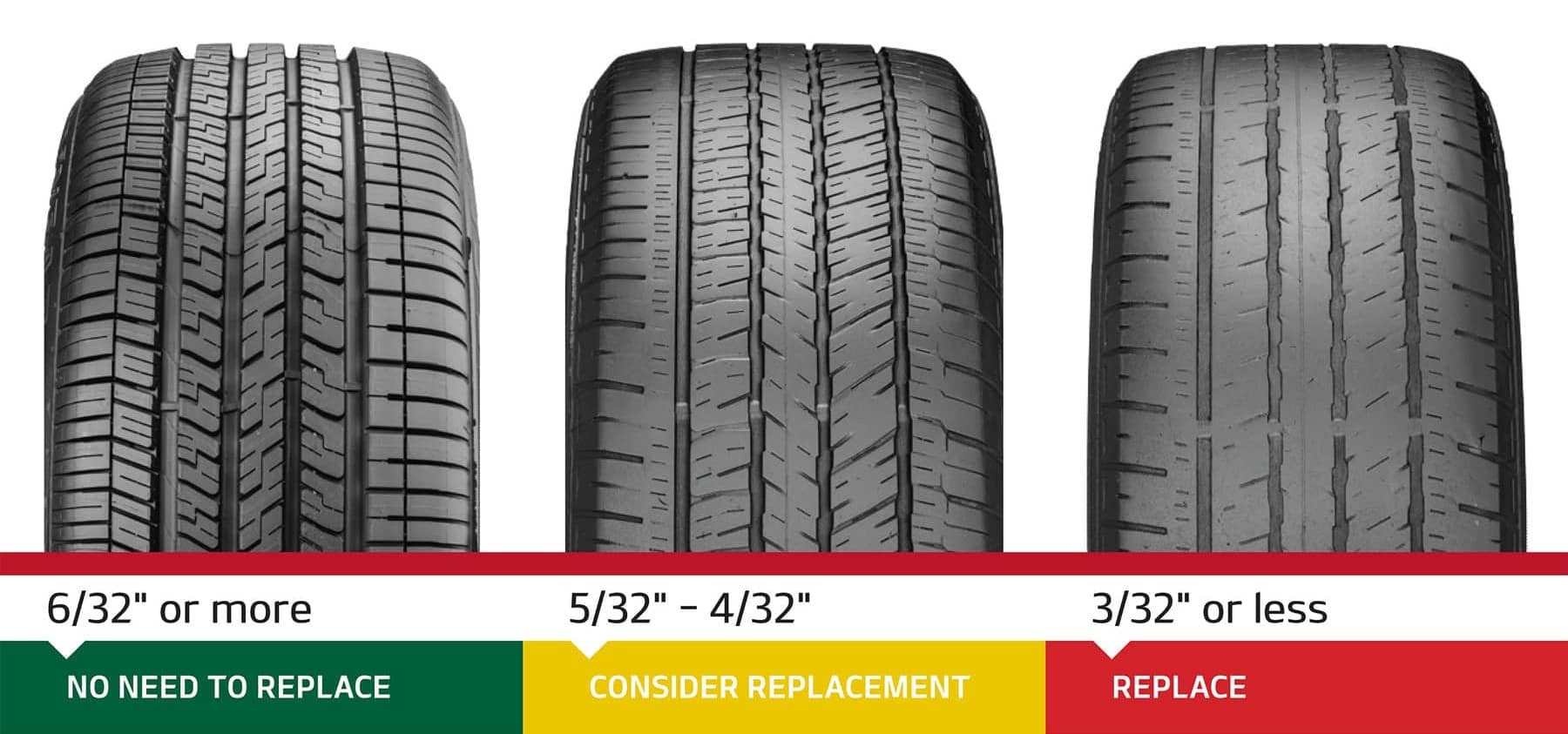Knowing when to replace tires is crucial for ensuring that your vehicle is safe and that it runs optimally. Given that tires are the only contact point between your vehicle and the road — they play a huge role in traction, handling, and breaking.
Although tires last up to six years, they can wear out and deteriorate prematurely for a number of reasons. This includes wrong tire pressure and bad driving habits. Understanding the signs that indicate the need for tire replacement is vital for long-term vehicle maintenance.
Learn the signs that can help you determine when it’s time to replace your tires.
6 Signs You Need to Replace Your Tires
Here are the 6 key signs that it’s time to get new tires:
Tread Wear
Tread wear affects your vehicle’s traction, handling, and safety. As the tread wears down, the tire’s ability to grip the road diminishes, especially in wet conditions, increasing the risk of skidding and reduced braking performance.
The tread on your tires should be at least 2/32 of an inch deep. To check tire tread depth, insert a penny into the tire’s tread grooves with Lincoln’s head facing downward. If you can see the top of Lincoln’s head, the tread is too shallow and the tire likely needs replacing. If the tread covers part of Lincoln’s head, your tread depth is adequate, but keep monitoring it as it wears down.

Uneven Wear
Uneven tire wear indicates underlying issues such as misalignment, improper inflation, or suspension problems. These issues can cause uneven stress on the tires, leading to accelerated wear and reduced performance. If not addressed, uneven wear can compromise safety, handling, and comfort, making it necessary to either correct the issue and replace the tires or both to ensure optimal driving conditions.
Related: What Does the Number on My Tires Mean?
Cracks and Bulges
Cracks and bulges indicate structural damage that can compromise the tire’s integrity. Cracks in the sidewall or tread and bulges suggest weaknesses that can lead to sudden blowouts, especially under stress or at high speeds. This damage typically results from factors like aging, impacts, or under-inflation, and replacing the tires is crucial to prevent dangerous failures while driving.
Vibration and Noise
Vibration often indicate issues such as uneven wear, internal damage, or imbalance. Excessive vibration can signal internal defects or deterioration, while unusual noises might suggest tread problems or structural damage.
Related: Why Does My Car Makes Noise When Turning (9 Possible Causes)
Tire Age
Overtime, tire rubber compounds deteriorate, becoming more brittle and less flexible. This degradation can lead to increased risk of cracks, blowouts, and compromised performance, even if the tread depth seems adequate.
Related: How Long Can You Drive on a Spare Tire?
Handling Issues
Handling issues often indicate that the tires have worn down or are compromised, affecting their ability to grip the road properly. Problems such as poor steering response, excessive skidding, or a lack of stability can result from uneven wear or reduced tread depth.
Summary
Knowing when to replace your tires is essential for maintaining vehicle safety and performance. Regularly monitoring the condition of your tires and addressing any signs of deterioration helps prevent potential hazards and ensures a smoother, safer driving experience.
